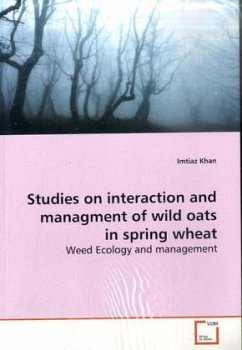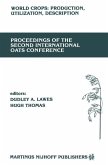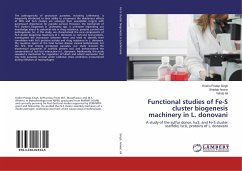Results showed that wild oats is an aggressive weed
and reduces the grain yield of wheat even if present
at density of one plant m-2 in wheat fields.
However, the yield reduction is dependent on wild
oat density i.e. higher the wild oats density,
greater will be the yield losses of wheat. Presence
of wild oats decreased all the yield components of
wheat whereas the greatest reduction was recorded in
tillers. It was concluded from the results of two
years of experimentation that presence of wild oats
density even at 1 m-2 caused substantial yield
losses, hence it must be controlled to mitigate the
yield and quality losses of wheat.Herbicide
carfentrazone ethyl ester is proved to be best
herbicide for controlling wild oats in spring
wheat.It is thus recommended that judicious thinking
is desired to manage different wild oats biotypes
infesting farmers fields.
and reduces the grain yield of wheat even if present
at density of one plant m-2 in wheat fields.
However, the yield reduction is dependent on wild
oat density i.e. higher the wild oats density,
greater will be the yield losses of wheat. Presence
of wild oats decreased all the yield components of
wheat whereas the greatest reduction was recorded in
tillers. It was concluded from the results of two
years of experimentation that presence of wild oats
density even at 1 m-2 caused substantial yield
losses, hence it must be controlled to mitigate the
yield and quality losses of wheat.Herbicide
carfentrazone ethyl ester is proved to be best
herbicide for controlling wild oats in spring
wheat.It is thus recommended that judicious thinking
is desired to manage different wild oats biotypes
infesting farmers fields.




